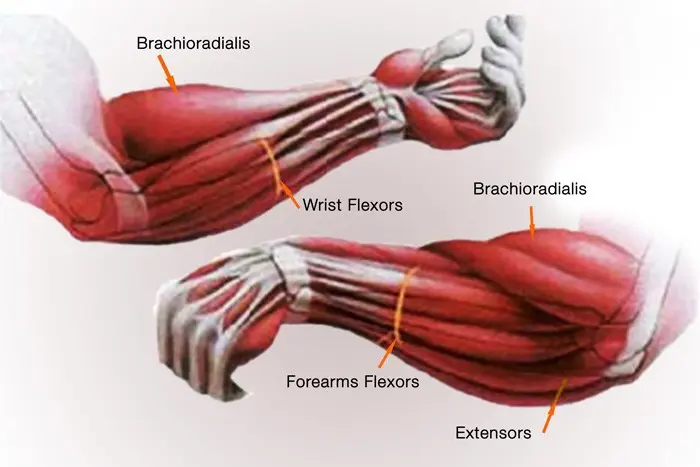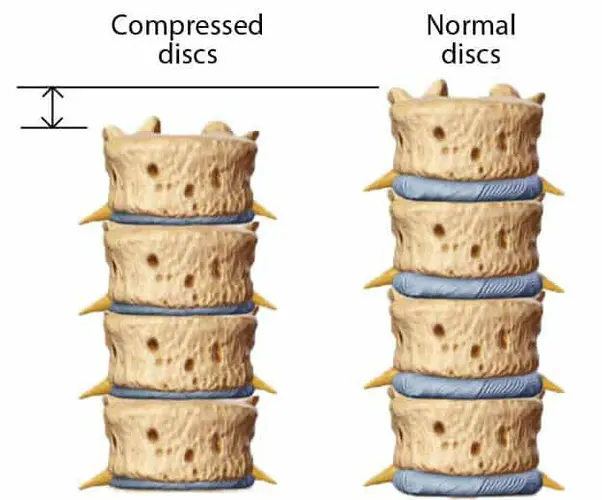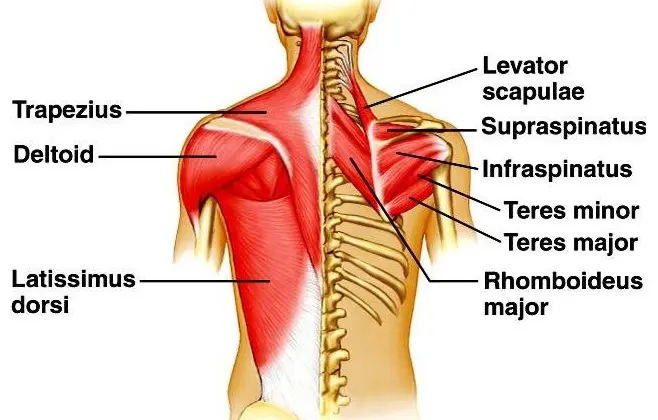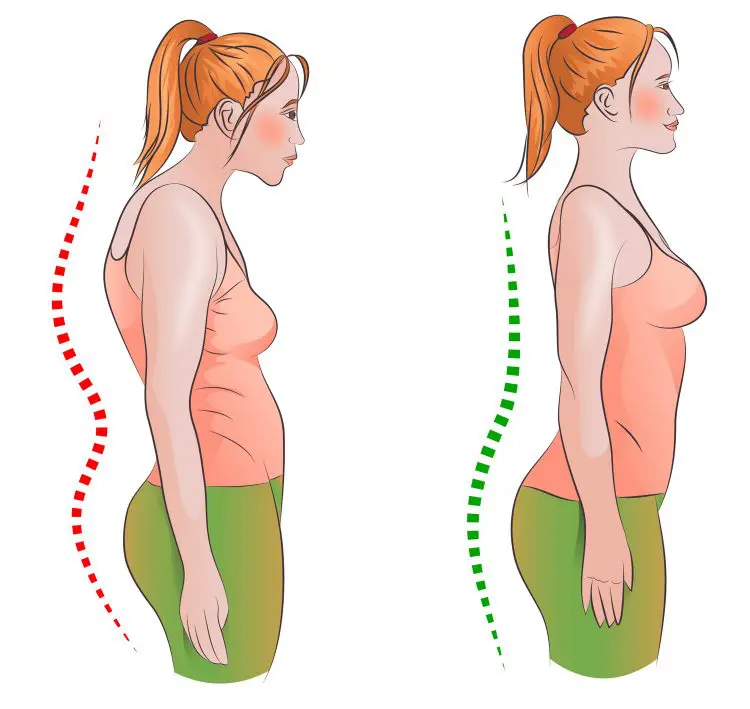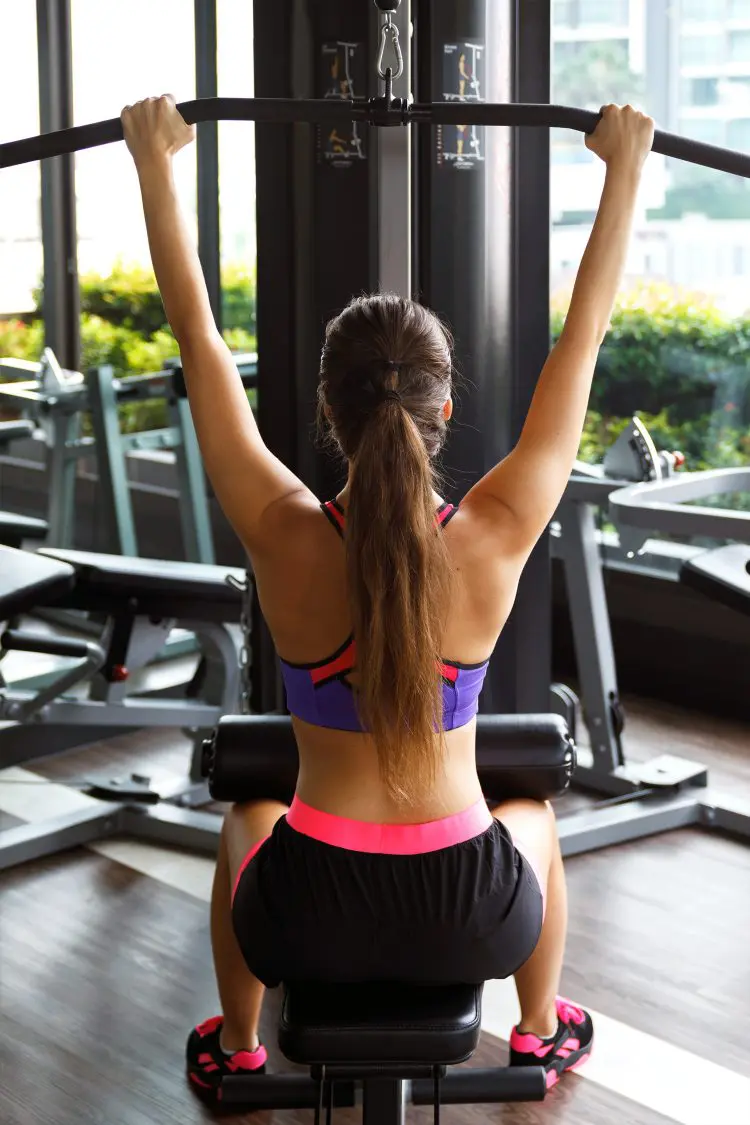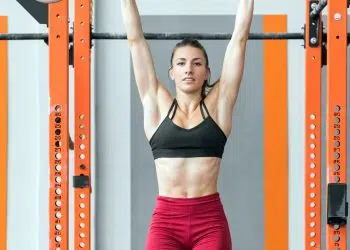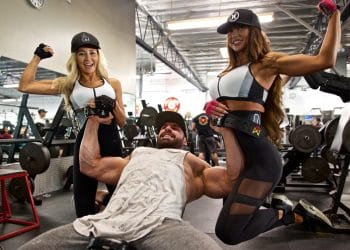We’ll be the first people to admit that the dead hang is not the most exciting bodyweight exercise you can do. After all, it involves nothing more than hanging from a pull-up bar for a minute or so.
But, despite this lack of movement, the dead hang is still a useful exercise. It’s not going to add slabs of muscle to your frame like deadlifts can, and it probably won’t make your biceps grow, but it’s still worth including in your workout plan.
In this detailed guide, we’re going to explain why and how to do the dead hang.
Dead Hang: Muscles Worked and Benefits
Despite their simplicity, dead hangs are a surprisingly beneficial exercise. The benefits of dead hangs include:
1. Stronger grip and bigger forearms
First and foremost, dead hangs are a forearm and grip exercise. There are more than 20 muscles in your forearms, and these muscles can broadly be divided into two groups – flexors and extensors.
Level Up Your Fitness: Join our 💪 strong community in Fitness Volt Newsletter. Get daily inspiration, expert-backed workouts, nutrition tips, the latest in strength sports, and the support you need to reach your goals. Subscribe for free!
The flexor group closes your hands and curls your wrists downward, while the extensor groups open your hands and extend your wrists backward.
Because dead hangs test and develop your grip, doing this exercise will improve your grip strength and may increase the size of your forearms.
2. Spinal decompression
Heavy squats, deadlifts, and overhead presses put a lot of stress on your spine. They can even make you shorter – albeit temporarily – as they compress your intervertebral disks. Thankfully, your disks return to their original shape and thickness an hour or two after your workout, and any lost height is regained.
That said, doing dead hangs can help speed up this process. Hanging from your arms means the weight of your lower body gently pulls your vertebrae apart, providing your disks with the space they need to expand. In medical terminology, this is called distracting a joint.
If your squat or deadlift workout has left you feeling compressed, doing dead hangs between sets or after your workout should help alleviate the problem.
2. Strengthen your lower traps
Contrary to appearances, dead hangs don’t just work your grip. To do dead hangs properly and safely, you must pull your shoulders down and back so that you aren’t just hanging from your shoulder ligaments.
While there is very little resistance to retracting or pulling your shoulders back, depressing or pulling your shoulders down is a much more active movement.
Shoulder depression is the job of your lower traps. Weak lower traps are a common cause of shoulder pain. Strengthening this often-underdeveloped muscle can help reduce your risk of shoulder injury by increasing shoulder joint and shoulder girdle stability.
4. Stretch your lats
Like any muscle, the latissimus dorsi or lats can become short and tight. Exercises like Kroc rows, pull-ups, and even deadlifts are great for developing bigger, stronger lats, but all that strength training can shorten this crucial back muscle.
Overly tight lats can affect your posture and your shoulder joint mobility. They can be a source of injury too. The lats can be a tricky muscle to stretch.
Dead hangs put your lats into an extended position and provide a deep but comfortable stretch. More flexible lats will make exercises like overhead presses, chin-ups, and any overhead movement easier.
5. Better posture
Posture refers to the alignment of your joints, which can be good or bad. Good posture places very little stress on your muscles or your joints. In contrast, poor posture can lead to increased muscle tension and can even cause aches and pains. Poor posture also affects how you look.
A lot of postural issues are caused by prolonged sitting and the effect of gravity on your joints and muscles. You’re literally being pulled forward and downward all day long. Dead hangs put your body into an extended position, reversing the effects of gravity and poor posture. After a set of dead hangs, you should feel much more upright. Done regularly, dead hangs could improve your posture.
How to Do Dead Hangs
To enjoy all the dead hang benefits listed in the previous section, you must perform this exercise correctly. Not only will the correct form increase the effectiveness of this exercise, but it will also make it safer too. Study and follow these instructions to ensure that you do dead hangs properly.
- Find somewhere suitable to hang. You should be able to touch the bar without jumping. Use a step or a bench to ensure you can comfortably reach the bar. Also, make sure that your feet are clear of the floor once you are hanging from the bar.
- Hold the bar with an overhand, slightly wider than shoulder-width grip. Chalk your hands if your palms are sweaty. You can also use a hook grip.
- With your arms straight, hang from the bar with your body straight and your feet off the floor. Do not fully relax your shoulders. Instead, keep them active by pulling them slightly down and back. Do not hold your breath.
- Remain motionless – no swinging or twisting – for the duration of your set. When you are done, step rather than jump down as jumping will shock load your spine, negating some of the decompressing benefits of this exercise.
- You can increase the stretch on your lats by carefully allowing your shoulders to rise. However, you should still not completely relax your shoulders as doing so will put a lot of stress on the passive structures of your shoulder joints and could lead to injury.
How long should you hang?
Your grip strength is the main determinant. Hold on for as long as you can and stop before your grip fails. Rest a minute or two and repeat if required. Try to increase the duration of your hang as your grip gets stronger.
Dead Hang Variations and Alternatives
Here are a few dead hang variations and alternatives to try that will ensure your workouts are always fresh and interesting.
Level Up Your Fitness: Join our 💪 strong community in Fitness Volt Newsletter. Get daily inspiration, expert-backed workouts, nutrition tips, the latest in strength sports, and the support you need to reach your goals. Subscribe for free!
1. Grip variations
One of the most obvious ways to add some variety to dead hangs is to use a different grip. While this one won’t affect things like spinal decompression or posture, using an alternative grip will work your hands and forearms differently.
Dead hang grip options include:
- Narrow overhand
- Neutral
- Underhand
- Mixed
- Pistol
- Suicide (thumbless)
Read more about different grips and their benefits in this guide.
2. Towel grip dead hang
This is a great variation if you’re doing dead hangs for a firmer grip. Using a towel makes maintaining your grip much more challenging. In fact, don’t be surprised if you can only do this exercise for a few seconds at a time.
To do it, loop two towels over your pull-up bar. Grip the ends together with one towel in each hand. Do your dead hang as usual. And yes, that wicked forearm pump is entirely normal!
3. Thick bar dead hangs
The thicker the bar, the harder it is to grip. That’s because you won’t be able to overlap your fingers as much (if at all), which reduces friction. If you have a thick barbell, put it at the top of your power rack and try doing dead hangs there. Alternatively, you can fix something like Fat Gripz to a standard pull-up bar.
4. Single-arm dead hang
Have you mastered regular dead hangs? Are you feeling strong? Give single-arm dead hangs a try. Set up as usual but only use one arm. This unilateral version gives your lats an even deeper stretch and will also stretch the muscles in the side of your waist and lower back.
5. Gymnastic ring dead hang
Using gymnastic rings instead of a straight bar means your arms and shoulders are free to rotate into the most natural and comfortable position. If you find that regular dead hangs cause shoulder or elbow pain, this may be the best variation for you.
6. Fingerboard dead hang
A fingerboard is a type of pull-up bar for climbers. Also called a crimp board, most have a variety of different shaped and sized holds to replicate the demands of rock climbing. If you are a climber or specifically want to work on your hand and finger strength, doing dead hangs with a fingerboard is sure to help.
Be warned, fingerboard dead hangs can be hard on your joints, so increase workout duration and frequency gradually. Also, start off using the larger holds and only progress to the small holds after a few months of consistent training.
7. Lat pull down dead hangs
The main disadvantage of dead hangs is that, to do them properly, you need to be strong enough to support your weight with just your hands. This is not always possible or practical. You can achieve a similar effect by doing dead hangs with a lat pulldown machine.
Hold the bar with your preferred grip, and then sit down. Remain with your arms extended and shoulders active for as long as required. Stand up at the end of your set; do not just release the bar and drop the weight.
Increase the weight as you get stronger, progressing to bodyweight dead hangs when you are ready.
8. Inversion
With dead hangs, the length of your set is usually limited by your grip strength. That’s not an issue if you are training your grip, but what if you are more interested in the decompression benefits of dead hangs? Using lifting straps is one solution, but full inversion may be a better option.
Inversion involves using so-called anti-gravity boots or an inversion table. Both options suspend you from your ankles, so your grip strength becomes a non-issue. If you are serious about spinal decompression, this is arguably the best solution. As an added benefit, you can also do inverted crunches and sit-ups as you hang upside down, both of which are very challenging core exercises.
Important Dead Hang Training Tips
Get the most from this useful exercise with our handy tips!
Don’t overdo it – dead hangs don’t look or feel especially hard, but that doesn’t mean you should do them daily. In fact, doing this exercise too often could lead to hand, elbow, or shoulder problems. Do dead hangs 2-3 times per week, allowing plenty of time between workouts for rest and recovery.
Don’t always train to failure – taking every set of dead hangs to failure is a good way to end up sore, injured, and overtrained. The occasional maximum duration test set is fine, but most of your workouts should be submaximal. See how long you can dead hang for, and then do 3-4 sets for 50-70% of that time. Increase gradually as you get stronger.
Vary your grip – one of the best ways to avoid overuse injuries from dead hangs is to vary your grip. If you are planning to do three sets, you could do each one using a different grip. This will not just make your workouts safer; they’ll also be more challenging and interesting.
End your pull-up workout with dead hangs – an easy way to implement dead hangs into your workouts is to add them to a set of chin-ups or pull-ups. Rep out as usual but then, on reaching failure, hang from the bar until your forearms start to fatigue. Don’t do this on your first set of pull-ups, or you may find your hands are too tired to do another set. Instead, save this strategy for your last 1-2 sets.
Try dead hang decompression supersets – one of the best times to do dead hangs is between sets of exercises that involve a lot of spinal compression, such as squats and overhead presses. This is called supersetting. You CAN do them between sets of deadlifts but take care not to fatigue your grip too much. Just a short hang should suffice.
Dead hangs – Wrapping Up
Dead hangs are a surprisingly beneficial exercise. A few seconds between squats and overhead presses can help decompress your spine, reducing back tension and pain. Longer hangs are good for your posture and can increase your grip strength.
However, despite their apparent simplicity, there is more to dead hangs than just swinging from a pull-up bar. If you do this exercise incorrectly, you could end up hurting your shoulders, elbows, or hands, negating all the benefits of doing them.
Use but don’t abuse dead hangs. It’s a useful addition to your workout toolbox but, if you do them too often or take all your sets to failure, they could cause more problems than they cure.
Interested in measuring your progress? Check out our strength standards for Sit Ups, Pull Ups, Deadlift, and more.

